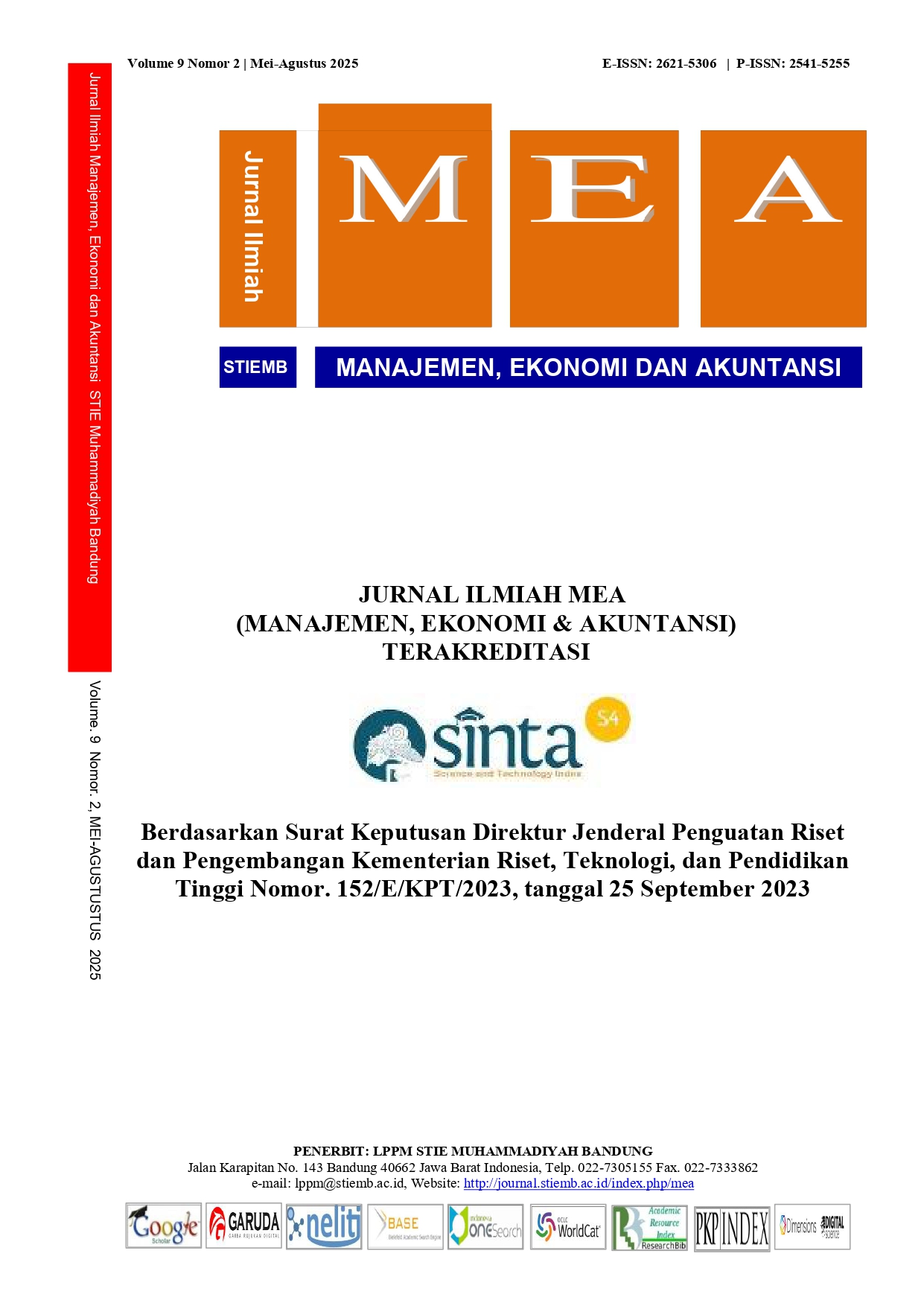STRATEGIC PLANNING FOR THE COMPUTER ENGINEERING PROGRAM IN THE CONTEXT OF INTERNATIONALIZATION AT XYZ UNIVERSITY
Abstract
An internationalization initiative at XYZ University’s Computer Engineering program, involving the establishment of an international class, has created a significant operational risk. A regulation mandating the transfer of 6 to 10 lecturers from the main program threatens to disrupt academic stability and teaching quality for its existing 300+ students. This research develops a strategic plan to address the lecturer transfer challenge. A mixed-method approach was employed. Internal analysis, through thematic analysis of stakeholder interviews, identified strengths such as digital readiness and industry partnerships, and weaknesses like lecturer availability issues. External analysis using PESTLE and Porter’s Five Forces identified opportunities, including IoT advancements, and threats such as higher education competition. These factors informed a SWOT analysis, which led to seven TOWS-generated strategies. The Analytic Hierarchy Process (AHP), with input from eight program stakeholders, was then used to prioritize these alternatives.The AHP results showed that “Strength” was the most critical decision criterion. The strategy SO1: “Utilize industry partnerships and digital readiness to deliver IoT–integrated hybrid learning, reducing lecturer dependency,” received the highest global priority (18.2%). The AHP model demonstrated good consistency (overall CR=0.03). This study concludes that implementing an IoT-integrated hybrid learning model is the most effective strategy for the Computer Engineering program to manage the lecturer transfer. The research provides an evidence-based SWOT-AHP framework for higher education institutions managing resources during internationalization, ensuring that expansion enhances rather than compromises core academic quality.
References
British Council Org. (2024). The outlook for international student mobility: amidst a changing global macroeconomic landscape.
Brown, J.-H., & Oplatka, I. (2015). Higher Education Consumer Choice. London: Palgrave Macmillan.
De Wit, H. (2019). INTERNATIONALIZATION IN HIGHER EDUCATION: A critical review. SFU Educational Review.
De Wit, H. (2020). Internationalization of Higher Education:The Need for a More Ethical and Qualitative Approach. Journal of International Students.
European University Association. (2024). Trends 2024: European higher education institutions in times of transition.
France Strategie. (2015). Diambil kembali dari Haut-commissariat à la Stratégie: https://www.strategie.gouv.fr/en/publications/investir-linternationalisation-de-lenseignement-superieur-0
Fred R, D. (2011). Strategic Management. Prentice Hall.
International Association Universities. (2024). Internationalization of Higher Education: Current Trends and Future Scenarios. IAU.
Knight, J. (2008). Higher education in turmoil: The changing world of internationalization. Canada: Sense Publishers.
Kurtilla, M., & M, P. (2000). Utilizing the analytic hierarchy process (AHP) in SWOT analysis. A hybrid method and its application to a forest-certification case. Forest Policy and Economics.
Porter, M. (2008). The five competitive forces that shape strategy.
Posselt, J., & E. Hernandez, T. (2019). Evaluation and Decision Making in Higher Education.
Saaty, T. L., & Vargas, L. G. (2012). Models, Methods, Concepts & Applications of the Analytic Hierarchy Process. Springer.
Shinno, H., & H, Y. (2006). Quantitative SWOT analysis on global competitiveness of machine tool industry. Journal of Engineering Design.
Simek, L., & Stewart, W. H. (2024). International student recruitment and support in Indonesia: A systematic review of literature from 2012-2022. Journal of Studies in International Education.
V, B., & V, C. (2006). Using thematic analysis in psychology. Qualitative Research in Psychology. University of West England.
Vogtle, E. M., & Windzio, M. (2024). Does academic freedom matter for global student mobility? . The International Journal of Higher Education.
Wang, N., & Nan, Z. (2025). Trends in the Internationalization of Higher Education: A Review of Internationalization at Home in China and other Countries. International Journal of Academic Research in Progressive Education & Development.
Wihardja, M. M., & Basri, C. (2025, March 27). Fulcrum. Diambil kembali dari Fulcrum : https://fulcrum.sg/growing-or-shrinking-how-indonesias-middle-class-is-really-doing/
Yavuz, F., & Tuzin, B. (2013). Use of swot and analytic hierarchy process integration as a participatory decision making tool in watershed management. 6th International Conference on Information and Communication Technologies in Agriculture, Food and Environment (Haicta 2013) . Istanbul: Elsevier.
Zulkarnaen, W., Fitriani, I., & Yuningsih, N. (2020). Pengembangan Supply Chain Management Dalam Pengelolaan Distribusi Logistik Pemilu Yang Lebih Tepat Jenis, Tepat Jumlah Dan Tepat Waktu Berbasis Human Resources Competency Development Di KPU Jawa Barat. Jurnal Ilmiah MEA (Manajemen, Ekonomi, & Akuntansi), 4(2), 222-243. https://doi.org/10.31955/mea.vol4.iss2.pp222-243.
Copyright (c) 2025 Jurnal Ilmiah Manajemen, Ekonomi, & Akuntansi (MEA)

This work is licensed under a Creative Commons Attribution-NonCommercial 4.0 International License.





















